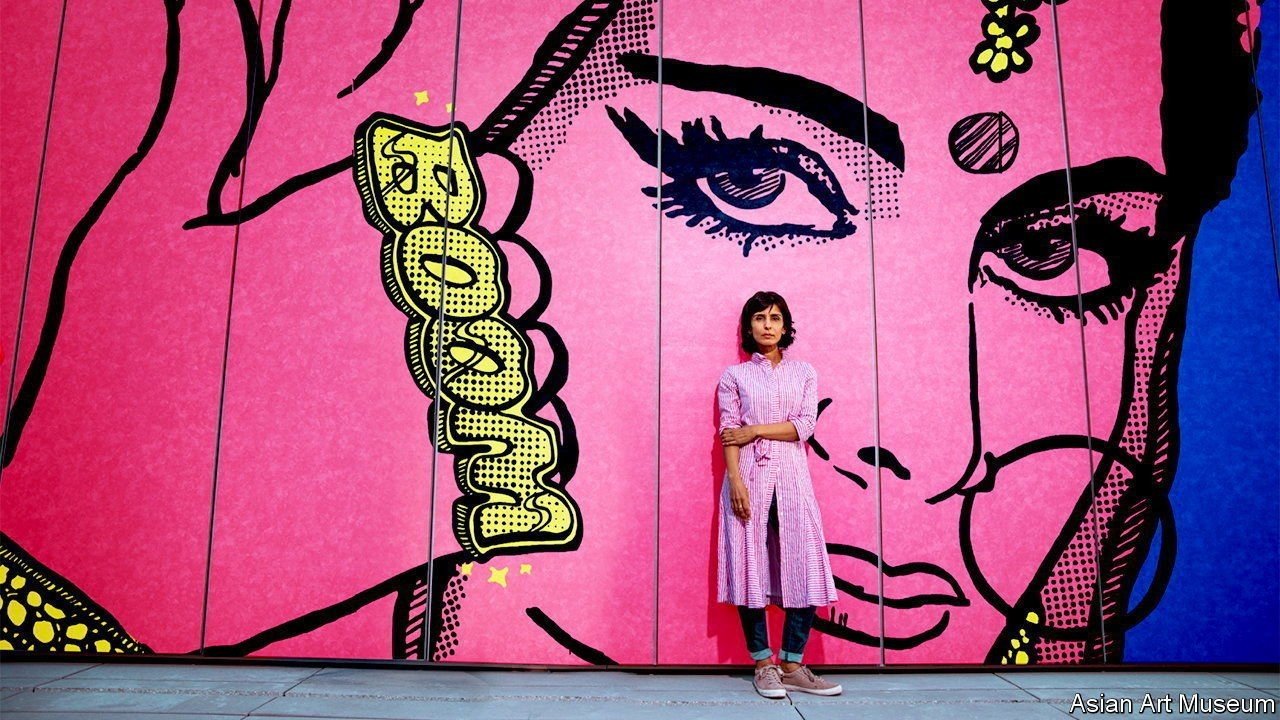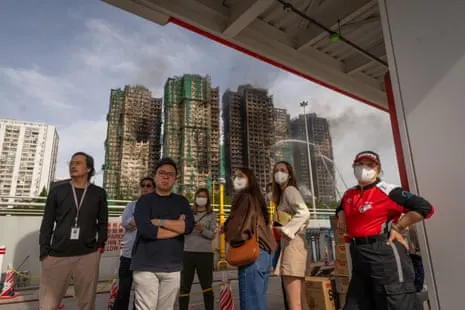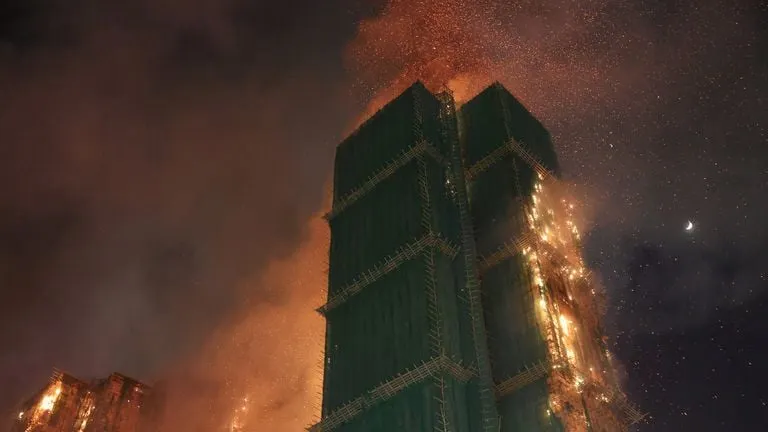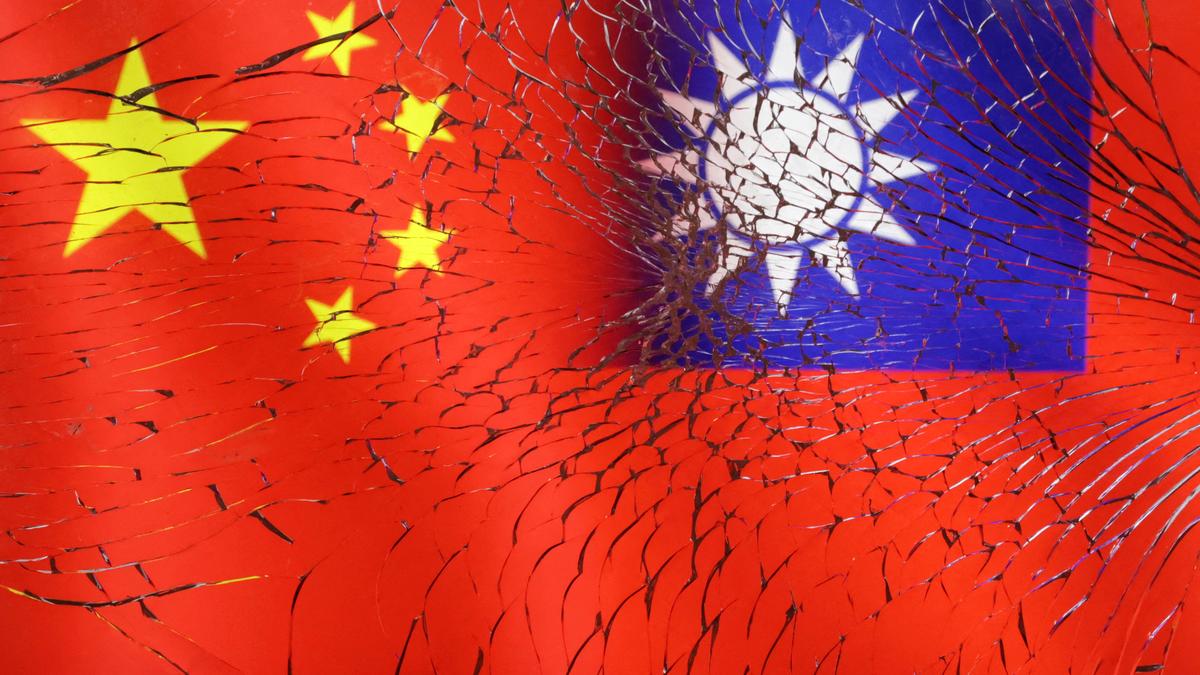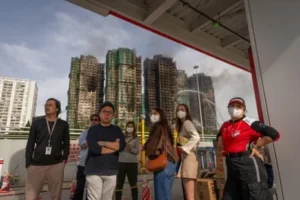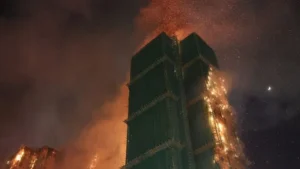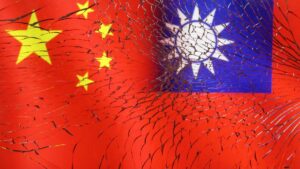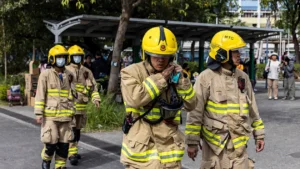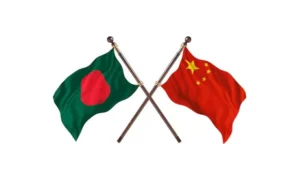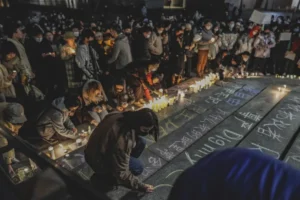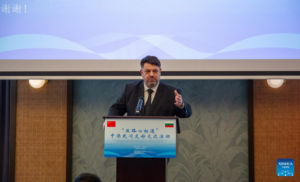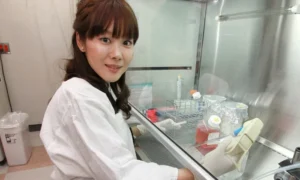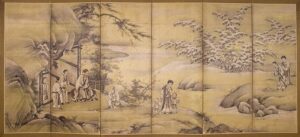The Asian Art Museum in San Francisco reassesses its past
AN INDIAN WOMAN peers over a parapet, her skin hot pink, her bindi red. Gold jewellery decorates her forehead and fist, where a golden knuckle-buster spells out “BOOM”. The mural by Jas Charanjiva, called “Don’t Mess With Me” (pictured), is one of three works by contemporary artists installed in a new pavilion at the Asian Art Museum in San Francisco. At street level, a colourful geometric panel by Jenifer Wofford lists the names of Asian-American artists who have long been overlooked, while in a vitrine above, Chanel Miller has produced a triptych of rotund creatures representing the healing process in the aftermath of a sexual assault she suffered in 2015 (both pictured below).
Taken together, the murals by these three young Asian-American women represent a bold change of direction for America’s largest public museum devoted solely to Asian art. The title of Ms Miller’s piece, “I was, I am, I will be”, seems particularly apt, as the museum unveils a $103m expansion and grapples with its own history and Orientalist roots. It opened in 1966, a gift to the city from Avery Brundage, an American industrialist and collector. He donated almost 8,000 Asian artworks, a number that has expanded over the decades to 18,000 objects, some of which date back 6,000 years. Yet as president of the International Olympic Committee, Brundage espoused racist and anti-Semitic views. The historic collection is at once exceptional and problematic.
The museum has also come under scrutiny for the way it has historically portrayed Asian art through a Western lens. Some years ago a show about Japanese geishas was loudly parodied by Scott Tadashi Tsuchitani, a local Japanese-American artist. More recently Chiraag Bhakta, an Indian-American artist, denounced the museum for balking at the word “white” in #WhitePeopleDoingYoga, his acerbic installation about the commercialisation of the pursuit. (The museum went ahead with the installation, but merchandise with the tag line was withdrawn.) Tensions came to a head during the racial-justice protests of 2020, when the museum was heavily criticised for continuing to display a bust of Brundage at its entry.
The museum’s management swiftly packed the statue off to storage. Curators had in fact been mulling what to do with it for some time, says the museum’s director, Jay Xu, a specialist in ancient Chinese bronzes. A reckoning with the institution’s “troubling legacy” was already under way as part of a strategic review aimed at “bringing the museum into the 21st century”. That review, which began in 2015, culminated in a decision to vastly expand its exhibition space and commitment to contemporary artists, and connect more deeply to Asian communities both abroad and at home. The museum has said it will also scrutinise the provenance of the items in its care and assess any claims to restitution. In September 2020 it announced that it would return two ancient Thai lintels donated by Brundage (the museum does not believe the items were looted but was “unable to locate copies of the export documents that the laws of that time required”).
The “transformation project”, as the name suggests, aims to change the museum inside and out. The expansion adds 28,000 square feet (2,600 square metres) of exhibition space, including the new pavilion and a terrace dedicated to contemporary sculpture. The interior of the museum’s Beaux Arts edifice has been reconfigured, with 15 masterpieces singled out from the various cultural regions represented in the collection: a 15th-century inscribed cup represents West Asia and the Persian world, for example, and an 18th-century statue of Simhavaktra, a Buddhist deity, is a treasure from the Himalayas and the Tibetan Buddhist world.
The changes extend to the museum’s administrators, too. The board was once exclusively white and male, but now women and Asian-Americans occupy 50% of the positions, says Mr Xu, who was appointed in 2008 as the museum’s first Chinese-born director. Mr Xu created a new department for contemporary art in 2018 and hired a local curator, Abby Chen, to lead it. For Ms Chen, previously artistic director at the nearby Chinese Cultural Centre (CCC) in San Francisco, the appointment shows that the museum is “ready to change the canon”. Her inaugural exhibitions feature work by artists never before shown in North American museums, such as Jayashree Chakravarty and Lam Tung Pang, from Kolkata and Hong Kong respectively. A splashy digital installation by teamLab, a collective based in Tokyo, is sure to draw new visitors in.
The museum, which is publicly owned and run, has pledged to engage more deeply with Asian-American artists from the San Francisco Bay Area, many of whom have long felt “huge frustration” at the institution’s lack of interest or representation, says Ms Chen. At the same time, hate crimes against Asian-Americans have risen during the coronavirus pandemic; in March six women of East Asian descent (and two other victims) were shot at a spa in Atlanta. In the wake of that tragedy, the Asian Art Museum joined the CCC and others in holding “Art Against Anti-Asian Violence” events, and took out a full-page advertisement in the San Francisco Chronicle featuring Ms Wofford’s mural and the headline: “WE ARE AMERICA, KNOW OUR NAMES”.
That commitment is being noticed. “They’re trying to listen,” says Marci Kwon, who teaches art history at Stanford University and co-founded its Asian American Art Initiative. “The Asian Art Museum seems to really be thinking about Asia as not just a singular geographic entity, but as something that is embedded in the lives and histories of people in the Bay Area.”
California is a state with a long history of anti-Asian discrimination, from the Chinese Exclusion Act of 1882 (introduced by a Californian senator) to the internment of Japanese-Americans during the second world war. It is also “the east coast of the Pacific,” Ms Chen notes: as such, a museum here can play a major role in supporting the broad Asian diaspora. “The Asian Art Museum cannot sit by the sidelines,” she says. “We need to be a loud voice, connected to public life, propelled by these artists and their voices, because the best way to speak is not with statements and blogs, but through the art.”
